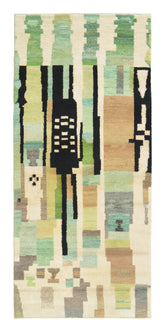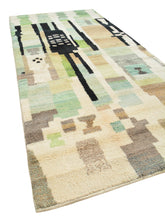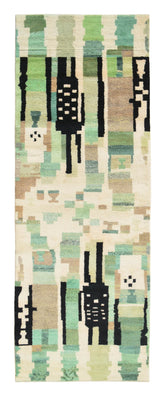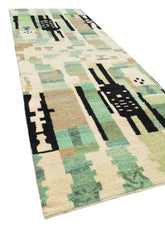The History and Tradition of Moroccan Rugs
Introduction to Moroccan Rugs: An Overview
Moroccan rugs are a rich part of Morocco's cultural heritage and have a history dating back centuries. These rugs, known for their intricate designs and vibrant colors, are traditionally hand-woven by the indigenous Berber tribes. Each tribe has its unique weaving style and patterns, often telling a story or symbolizing a significant event. Moroccan rugs are not just functional household items but are considered works of art that reflect the weaver's personal expression and the cultural identity of the region. In this blog, we will delve into the fascinating history and tradition of these exquisite rugs.
The Ancient Roots of Moroccan Rug Making
The art of making Moroccan rugs traces back to the Paleolithic Era, when the indigenous Berber tribes used this craft to create practical items for daily life. These tribes spun cloth from sheep and goat wool, incorporating intricate patterns and symbols that told stories of their lives, beliefs, and experiences. This traditional craft has been passed down through generations, with each rug reflecting the distinctive style of the tribe or family that created it. Even today, these beautifully crafted rugs are an integral part of Moroccan culture and heritage, admired worldwide for their unique designs and high-quality craftsmanship.
Regional Variations: Distinguishing Between Different Moroccan Rugs
In our journey through the history and tradition of Moroccan rugs, it's essential to understand the unique regional variations. Each region of Morocco boasts its own distinct style and design. For example, the rugs from the Middle Atlas region are known for their diamond patterns and use of darker colors, while those from the High Atlas area tend to have more abstract designs with bright, vibrant colors. Meanwhile, the rugs from the Rabat region are famous for their intricate, detailed patterns and rich color palettes. These variations give each Moroccan rug its unique charm, telling a story of the region it comes from, the tribe that made it, and the traditions they uphold.
The Artistry of Moroccan Rug Weaving: A Deep Dive into Craftsmanship
Moroccan rug weaving is a vibrant display of craftsmanship, reflecting the rich cultural history and traditions of Morocco. The artistry involved in creating these rugs is a meticulous process passed down through generations. Skilled weavers pour their creativity into each knot and thread, bringing to life a tapestry of geometric patterns and bold colors. The rugs are often symbolic, with each pattern holding a unique story or meaning. From the selection of the finest threads to the intricate weaving techniques, Moroccan rug making is a testament to the dedication, skill, and artistry of the Moroccan people.

Symbolism and Storytelling: The Hidden Meanings in Moroccan Rugs
Moroccan rugs are not just practical home decor but also a form of storytelling and symbolism. Each rug is woven with a unique blend of symbols and colors that tell a story or represent a specific cultural tradition. For instance, the diamond shapes often seen in these rugs symbolize protection against evil spirits, while zigzag patterns represent flowing water. The weaver, usually a woman, weaves her personal experiences, emotions and hopes into the rug, making it a unique piece of art. Therefore, owning a Moroccan rug is like possessing a small piece of Moroccan history and culture, each with its own hidden meanings and stories waiting to be unraveled.
The Role of Moroccan Rugs in Traditional Moroccan Society
Moroccan rugs played a significant role in traditional Moroccan society, acting as not just home decor but also a form of self-expression. Artisans, predominantly women, wove these rugs by hand, each design telling a unique story of the weaver's life or reflecting the cultural heritage of a specific tribe. These rugs served multiple practical purposes as well - from bed covers to seating mats and even saddle blankets. The making and trading of these rugs also contributed to the local economy, making them a vital part of Moroccan culture and tradition.
Moroccan Rugs in the Global Market: From Local Craft to International Commodity
Moroccan rugs have made a significant impact on the global market, transitioning from a local craft to an international commodity. These rugs, once woven by Berber tribes for practical uses, are now sought after worldwide for their unique designs and high-quality craftsmanship. The global appreciation for Moroccan rugs has resulted in a surge of demand, making them a staple in international home decor. The rise in popularity has not only benefited the global market but also promoted the rich history and tradition of Moroccan weaving, ensuring its preservation and continuation for generations to come.

The Influence of Moroccan Rugs on Modern Design and Interior Decoration
Moroccan rugs have significantly influenced modern design and interior decoration. These rugs, with their unique patterns and vibrant colors, have become a popular choice for interior designers. They serve as a bold centerpiece, adding warmth, texture and a touch of exoticism to any space. The geometric designs and earthy tones of Moroccan rugs effortlessly blend with various design styles, from minimalist to bohemian. They are not just floor coverings; they are works of art that add depth and character to a room. In essence, Moroccan rugs have transformed modern interior design by introducing a timeless element of global culture and tradition.
Preserving the Tradition: The Future of Moroccan Rug Making
Preserving the tradition of Moroccan rug making is crucial for its future. These rugs, known for their distinct patterns and vibrant colors, are an integral part of Morocco's rich cultural heritage. Their creation process is a time-honored craft, passed down through generations. However, with the advent of modern manufacturing methods and cheaper imports, this traditional craft is at risk. Efforts are being made to safeguard this tradition, through training programs for young artisans and initiatives promoting the value of handmade Moroccan rugs. These steps not only help in keeping the craft alive but also ensure the future of Moroccan rug making is preserved.
Conclusion: The Everlasting Charm of Moroccan Rugs
In conclusion, the timeless allure of Moroccan rugs lies in their unique blend of history, tradition, and craftsmanship. These rugs, with their distinct patterns and vibrant colors, not only serve as a functional piece of home decor but also as a testament to Morocco's rich cultural heritage. Their enduring popularity worldwide is a testament to the skill and creativity of the Moroccan artisans who have been passing down their rug-making techniques for generations. Whether used to add warmth to a room, to create a focal point, or simply to admire their beauty, Moroccan rugs continue to captivate with their unique charm.






